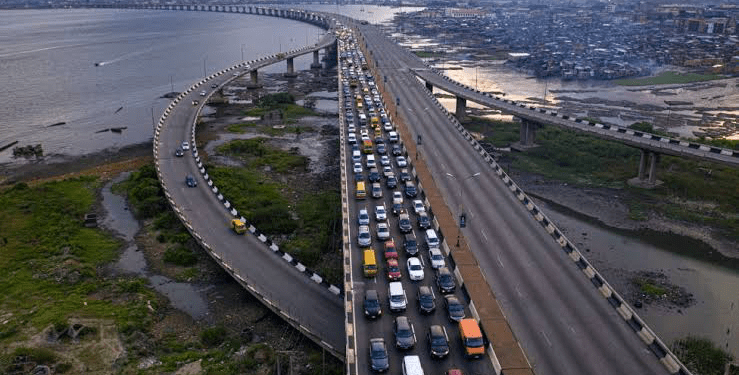Minister Umahi Unveils Comprehensive Security Measures for Lagos’ Iconic Bridge
In a bold move to enhance public safety and protect critical infrastructure, the Minister of Works, Dave Umahi, has revealed the strategic implementation of an advanced surveillance system on Lagos’ Third Mainland Bridge. Speaking during an interview on Channels Television’s Politics Today, Umahi detailed how the new closed-circuit television network serves multiple crucial functions beyond basic monitoring.
Multi-Purpose Surveillance System Addresses Multiple Threats
The newly installed CCTV system represents a significant technological upgrade for one of Nigeria’s most vital transportation arteries. According to Minister Umahi, the cameras serve dual critical purposes: preventing potential suicide attempts and halting illegal sand excavation that threatens the bridge’s structural integrity.
“We’ve strategically placed CCTVs underneath the bridge deck to identify anyone excavating sand within a 10-kilometer radius,” Umahi explained during the televised interview. “This unauthorized sand removal poses a serious threat to the bridge’s foundation.”
The minister further elaborated on the comprehensive security approach, noting, “We’ve constructed an examination facility adjacent to the waterfront where personnel from the police, navy, army, and local security forces monitor the surveillance feeds continuously.”
Suicide Prevention Through Technology
One of the primary motivations behind the surveillance system’s implementation is addressing the concerning pattern of suicide attempts on the iconic bridge. The Third Mainland Bridge has unfortunately become known as a location where individuals in crisis sometimes attempt to take their lives.
“With this CCTV network, security personnel can quickly identify anyone exhibiting concerning behavior and intervene before tragedy occurs,” Umahi stated. “The cameras provide real-time monitoring that allows for rapid response when someone appears to be in distress.”
Mental health advocates have long called for additional safety measures on bridges worldwide, with surveillance being one component of comprehensive prevention strategies.
Infrastructure Protection Through Constant Vigilance
Beyond suicide prevention, the surveillance system targets another serious issue threatening the bridge’s longevity—illegal sand excavation beneath the structure.
“The unauthorized removal of sand from around the bridge’s foundation piers compromises structural stability,” Umahi emphasized. “This new system ensures we can identify and stop this destructive activity immediately.”
Engineering experts have consistently warned about the dangers of excavation near bridge supports, which can lead to settling, shifting, and potentially catastrophic failures if left unchecked.
Independence Bridge Reopening Following Critical Repairs
During the same interview, Minister Umahi addressed the recent reopening of Lagos’ Independence Bridge after emergency repairs.
“The closure was necessitated by a significant structural failure involving the approach slab, which collapsed due to fundamentally flawed design elements,” he explained.
According to the minister, the original construction utilized a cantilever approach that proved structurally unsound. The situation became critical when supporting sand fill eroded, causing the integrity of the slab to fail and creating hazardous conditions for commuters.
“We’ve completely redesigned and reconstructed the affected sections to prevent similar failures in the future,” Umahi added.
Lagos-Calabar Coastal Highway Progress
Umahi expressed satisfaction with ongoing development of the ambitious Lagos-Calabar coastal highway project. The minister revealed that approximately 15 kilometers of dual carriageway has been completed at the beginning of section one, with an additional 5 kilometers finished near Eleko where the first section terminates.
“By May 25, 2025, we will have a continuous 30-kilometer stretch ready for President Bola Tinubu to officially commission,” Umahi stated. “This represents significant progress on a transformative infrastructure project connecting key economic zones.”
Infrastructure Investment Continues Despite Challenges
These developments highlight the federal government’s continued focus on infrastructure development despite economic challenges. The installation of advanced surveillance systems, structural repairs to existing bridges, and progress on new highway projects demonstrate a multi-faceted approach to transportation infrastructure.
Minister Umahi’s announcements signal an increased emphasis on both protecting existing assets through technology and expanding Nigeria’s road network through ambitious new projects.




